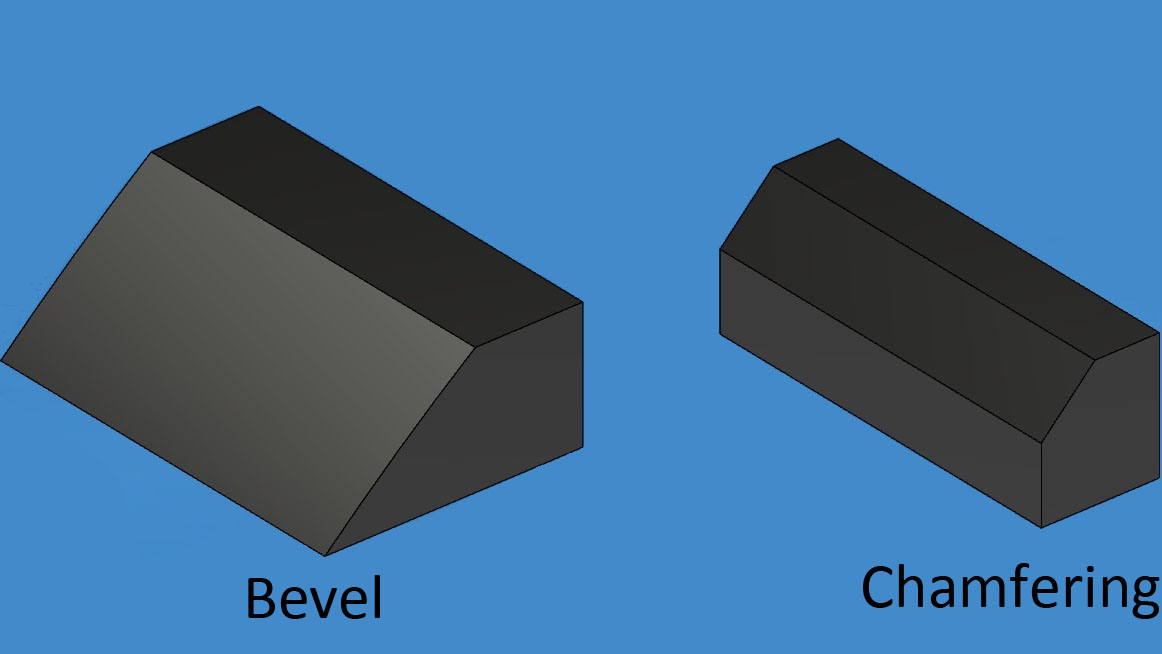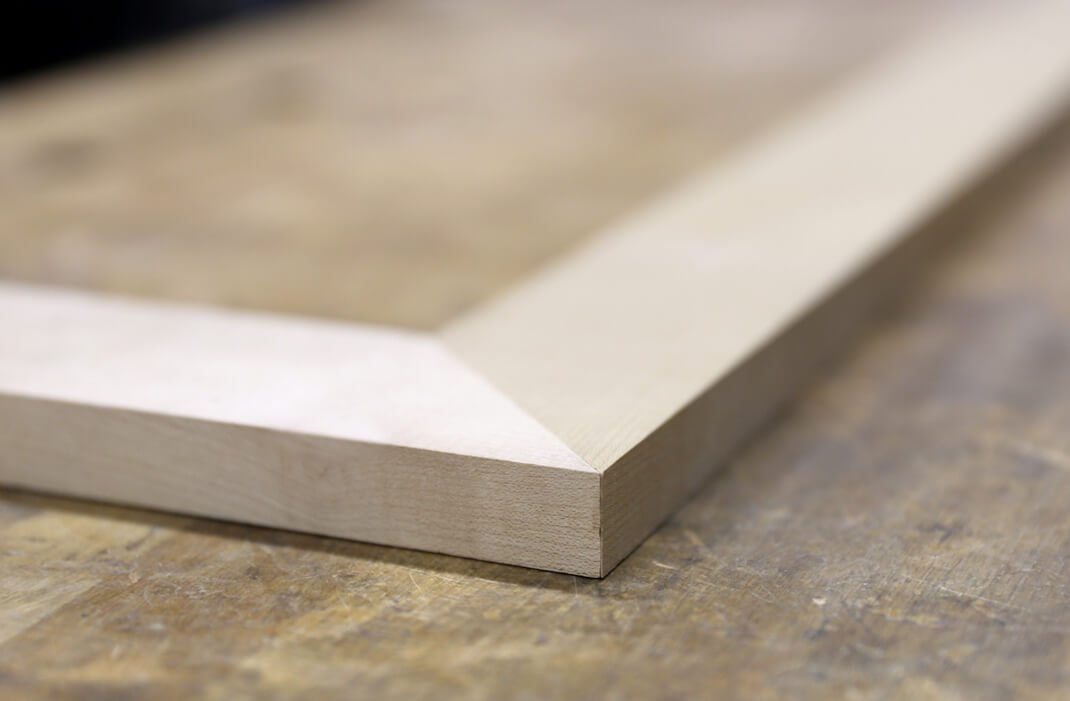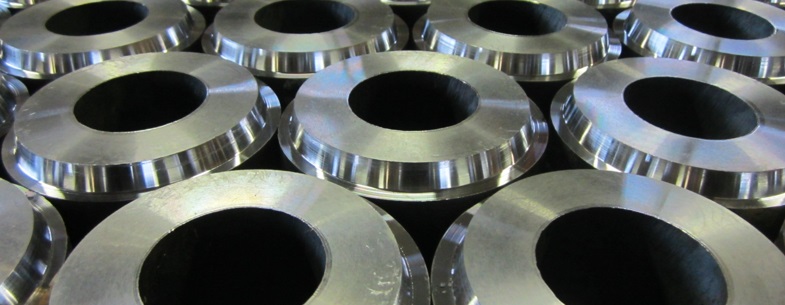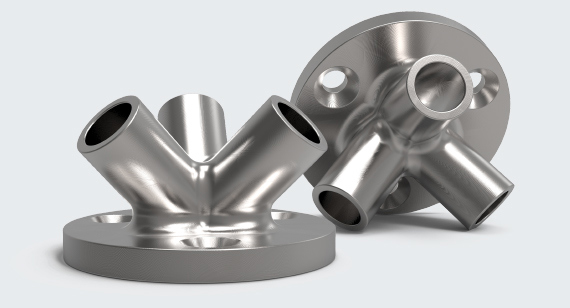When we look at the edges of any product, we might not always think about how important they are. But in manufacturing, the design of an edge can make a big difference in how strong and good-looking a material is. Let's dive into the world of edges and see why they matter so much.
Overview of Edge Design in Manufacturing
In making things, whether it's a piece of furniture or a high-tech gadget, the edges are key. They can affect how safe the product is to handle and how it fits with other parts. Bevel vs. Chamfer—these are two types of edges that are super common in all sorts of materials.

Importance of Edge Selection in Material Strength and Quality
Choosing the right edge can make or break a material. A well-designed edge can add stability and strength. This means the product can last longer and stay safe to use. When edges are not made right, they can be weak spots that cause the material to break or wear out fast.
Introduction to Bevel and Chamfer Edges
Beveled Edge
A beveled edge is an angled cut along the edge of a material. It's not just straight up and down—it's slanted. This kind of edge can make materials fit better with other parts and can add a touch of aesthetic appeal. In woodworking, a beveled edge can add sophistication to the final product.
Chamfered Edge
A chamfered edge is similar but a bit different. It's like a corner that's been cut off cleanly, usually at a 45-degree angle. This makes the edge safer because it gets rid of sharp corners. It's a symmetrical cut that can also make things look neat and finished.
Both bevels and chamfers help with safety by getting rid of dangerous sharp corners. They can also make products look better and work better. When making things, it's important to think about these edges because they have to do with precision requirements and how much things cost to make.
Detailed Analysis of Bevel Edges
What is a Bevel? Definition and Design Principles

The concept of a bevel in manufacturing and fabrication is rooted in its unique angular cut, a pivotal design feature that distinguishes it from other edge types. A bevel is essentially an edge that is not perpendicular to the faces of an object, but instead, it is cut at a specific angle that is less than 90 degrees. This design decision is driven by the need to modify the material's profile for various purposes, from enhancing joint strength to improving aesthetic appeal.
Functional Applications of Bevels in Manufacturing
Bevels are not merely decorative elements; they hold a significant place in the functional design of products. In the realm of manufacturing, bevels serve multiple critical purposes:
● Enhanced Joint Strength: Beveled edges provide a larger surface area for joining, leading to stronger and more durable connections in assembly processes. This is particularly advantageous in welding, where beveled edges facilitate deeper penetration of the weld, thus ensuring a robust joint.
● Improved Safety: The angled cut of a bevel reduces the sharpness of edges, minimizing the risk of injury from handling. This safety aspect is crucial in consumer products, where user interaction is frequent.
● Wear Resistance: In items subject to friction or abrasive forces, beveled edges help in distributing stress more evenly, thereby reducing wear and prolonging the lifespan of the product.
Aesthetic Considerations of Bevel Edges
Beyond functionality, bevels contribute significantly to the aesthetic quality of a product. Their angular nature can create visually appealing lines and shadows, adding depth and sophistication to the design. This is particularly evident in the following areas:
● Architectural Elements: In architectural hardware, beveled edges add a touch of elegance and refinement, making them a popular choice for decorative trim, door handles, and other fixtures.
● Furniture Design: The use of bevels in furniture, such as tabletops and mirrors, offers a contemporary look while also softening potentially hazardous sharp corners.
● Consumer Electronics: The sleek, modern appearance of many gadgets is often achieved through the use of beveled edges, which add a futuristic and polished feel to the design.
Exploring the World of Chamfer Edges
Understanding Chamfers: Basics and Design
Chamfer edges, a cornerstone in modern manufacturing and design, offer a unique blend of functionality and aesthetic elegance. Distinct from the beveled edge, a chamfer is a symmetrical, linear cut typically made at a 45-degree angle, though this can vary depending on specific design requirements. This straightforward yet effective modification serves multiple purposes, from safety enhancements to improving the ease of assembly.
Practical Uses of Chamfer Edges Across Industries
The chamfer has found its way into various industries, each leveraging its properties for different applications:

● Enhancing Safety: The primary function of a chamfer in many consumer products is to remove sharp edges, thereby reducing the risk of injury. This safety feature is essential in everyday items such as furniture, tools, and children's toys.
● Facilitating Assembly: In mechanical and industrial design, chamfers are integral in aiding the assembly process. The angled cut helps in aligning parts, making it easier to fit screws, bolts, and other components, particularly in tight spaces.
● Stress Reduction: In structural applications, chamfers can help distribute stress more evenly across a surface, thereby reducing the concentration of stress at sharp corners which can lead to material failure.
Chamfers for Safety and Aesthetics: A Dual Perspective
Chamfers are not just about safety and functionality; they also play a significant role in the aesthetic appeal of a product:
● Visual Appeal: The clean and precise lines of a chamfer lend a modern and refined look to products. This is especially evident in architectural elements, where chamfers add a touch of sophistication to edges and corners.
● Texture and Depth: Chamfers can create interesting textures and shadows on surfaces, adding depth and visual interest to otherwise flat areas. This effect is particularly sought after in high-end product design, where every detail counts in creating a premium feel.
Bevel vs. Chamfer - Comparing the Two

Design Intent and Functional Differences
In the world of manufacturing and fabrication, understanding the distinct roles and functionalities of bevels and chamfers is crucial for optimal design execution. While both serve to modify edges, their design intents and functional purposes set them apart in significant ways.
Bevels:
● Design Intent: Primarily aimed at enhancing structural integrity and facilitating efficient joining processes.
● Functional Use: Bevels are often utilized in welding and carpentry, providing a larger surface area for stronger bonds and better weight distribution.
Chamfers:
● Design Intent: Focused on safety and ease of assembly, chamfers are tailored to reduce sharp edges and streamline the manufacturing process.
● Functional Use: Common in mechanical parts and consumer products, chamfers aid in assembly, prevent injury, and often contribute to the overall aesthetics of the product.
Analyzing the Angle Characteristics
The angle at which the edge is cut plays a pivotal role in determining the suitability of a bevel or chamfer for a specific application.

Bevel Angles:
● Variability: Bevel angles are diverse, often tailored to specific requirements of the joining process.
● Application Specificity: Different angles are used depending on the material and the type of joinery, such as in welding or wood joinery.
Chamfer Angles:
● Standardization: Chamfers typically feature a 45-degree angle, although this can vary based on design needs.
● Consistency Across Applications: This angle consistency simplifies design processes and ensures uniformity in mass-produced items.
Aesthetic Impact: Bevels vs. Chamfers
While functionality reigns supreme, the aesthetic impact of bevels and chamfers cannot be understated in product design.
Bevel Aesthetics:
● Visual Dynamics: Bevels add depth and texture to products, often used in high-end designs where detail is paramount.
● Enhanced Sophistication: In architecture and furniture design, bevels offer a subtle yet sophisticated visual appeal.
Chamfer Aesthetics:
● Clean and Crisp Appearance: Chamfers contribute to a modern and sleek look, highly desirable in contemporary design.
● Versatility in Style: Easily adaptable to various design languages, chamfers can complement both modern and traditional aesthetics.
Measuring Bevels and Chamfers
How to Measure Bevel Angles Accurately
Measuring bevel angles requires precision and an understanding of geometric principles. The angle of a bevel is typically measured from the perpendicular face of the material to the inclined edge. This can be done using tools such as protractors or angle finders, which allow for precise measurements in degrees. For high-precision requirements, digital measuring tools that offer exact readings and can store data for future reference are often used. The key is to ensure that the angle measurement aligns with the design specifications, as even a slight deviation can impact the fit and function of the finished product.
Chamfer Measurement Techniques and Standards
Chamfer measurements, while seeming straightforward, demand attention to detail. The standard approach is to measure the chamfer’s length from the edge to the point where it intersects the adjacent surface. This is often done with rulers or calipers for accuracy. In industries where standardization is crucial, chamfers are measured following specific guidelines, ensuring uniformity across all parts. These standards can vary depending on the industry and the application, but the goal remains the same: to achieve a consistent and precise chamfer that meets the design requirements.
Measurement Overlaps and Contextual Importance
In some cases, the measurements of bevels and chamfers can overlap, particularly in industries where both are used interchangeably. This necessitates a clear understanding of the context in which these edge types are being used. For example, in woodworking, the distinction between a bevel and a chamfer may be less pronounced, whereas in metal fabrication, the distinction is critical for the integrity of the joint. It's important to consider the end-use and the material properties when measuring and applying these edge types.
Structural Integrity: Bevels vs. Chamfers
Assessing the Stability of Beveled Edges
In the realm of material fabrication, the stability of beveled edges is a subject of paramount importance. Beveled edges are not just aesthetic enhancements; they play a crucial role in enhancing the structural integrity of materials. By redistributing mechanical stress along the edge, bevels can significantly reduce the concentration of stress at critical points. This is particularly vital in applications where materials are subject to high levels of stress, such as in structural beams, machine parts, and load-bearing components.
Key Aspects of Beveled Edges:
● Stress Distribution: The angled nature of beveled edges helps in dispersing stress over a larger area, minimizing the risk of cracks and material failure.
● Joint Strength: In welding and joinery, beveled edges offer a greater surface area for adhesion, resulting in stronger and more reliable joints.
Chamfers: Ensuring Safety and Stress Distribution
Chamfers, while often appreciated for their aesthetic and safety attributes, also contribute significantly to the structural integrity of products. The primary function of a chamfer in a structural context is to remove sharp corners, which are potential points of weakness under stress. In doing so, chamfers contribute to the longevity and durability of the product.
Structural Benefits of Chamfers:
● Safety Enhancement: By eliminating sharp edges, chamfers reduce the likelihood of stress concentration, which can lead to material fatigue and failure.
● Ease of Assembly: Chamfers facilitate smoother assembly processes, especially in mechanical and engineering applications, reducing the risk of improper alignment and subsequent structural weaknesses.
Decision Factors Based on Structural Needs
When deciding between a bevel and a chamfer, several factors must be considered to ensure structural integrity:
● Material Type and Application: The choice between a bevel and a chamfer often depends on the type of material being used and its intended application. For instance, thicker and more rigid materials might benefit more from beveled edges, whereas chamfers might be more suitable for materials requiring finer, more precise edges.
● Stress Factors: Understanding the stress factors that the material will be subjected to is crucial. Bevels might be more appropriate in high-stress applications due to their ability to distribute stress more effectively.
● Manufacturing Process: The chosen manufacturing process also plays a significant role in this decision. For example, processes involving welding or adhesives might necessitate beveled edges for optimal results.
Cost Analysis of Bevels and Chamfers
Material and Production Costs of Bevels
In the arena of manufacturing, cost efficiency plays a pivotal role. When it comes to bevels, the focus is often on the material and production costs associated with their creation. The process of creating bevels can involve additional material usage due to the angled cuts required. This might lead to increased waste and, consequently, higher material costs. Additionally, the production process for bevels often necessitates specialized machinery or tools, which can elevate the cost further, especially in cases where high precision is required.
Chamfering: Efficiency and Cost Savings
Conversely, chamfering is often seen as a more cost-effective alternative. The process of chamfering generally involves simpler cuts, which can be executed with standard machinery available in most manufacturing facilities. This results in less material waste and reduced production time, translating into significant cost savings, particularly in large-scale production. Chamfering, due to its simplicity and efficiency, is often the go-to choice for projects where budget constraints are a significant concern.
Design Complexity and Associated Expenses
The complexity of the design plays a substantial role in determining the cost. Bevels, often used in more complex designs, can lead to higher production expenses due to the intricacies involved in their execution. Chamfers, with their straightforward design, usually do not add much complexity to the manufacturing process, making them a more budget-friendly option in scenarios where design simplicity is key.
Precision and Tolerance in Cost Evaluation
The required level of precision and tolerance also factors into the cost. Bevels, which are often used in applications where precision is crucial, such as in high-stress or high-impact environments, may require additional processing and quality checks, further adding to the cost. Chamfers, being generally less critical in terms of precision, may not necessitate such extensive quality control measures, offering a more cost-effective solution in situations where tolerance levels are moderately lenient.
Choosing the Right Edge: Bevel or Chamfer
Project Goals and Material Considerations
When selecting between bevels and chamfers for a project, the initial step involves a thorough assessment of project goals and the materials involved. This decision is not merely about aesthetics; it's a strategic choice that impacts the functionality, safety, and overall success of the product.
Factors to Consider:
● Type of Material: Different materials react differently to edge treatments. For instance, harder materials might be more suited to bevels for structural integrity, while softer materials could be better off with chamfers for ease of handling.
● End-Use of the Product: The intended use of the product plays a crucial role. If the product is subject to heavy wear or stress, a bevel might be more appropriate. Conversely, for products requiring less rigorous use, a chamfer could suffice.
Aesthetic Appeal and Safety Factors
The aesthetic appeal and safety factors are equally important in the decision-making process. While bevels can offer a more sophisticated, high-end look, chamfers provide a clean and modern appearance. Safety is paramount, especially in consumer products. Chamfers, by eliminating sharp corners, can enhance the safety aspect of products.
Aesthetic and Safety Considerations:
● User Interaction: Products frequently handled by users might benefit from chamfers to prevent injuries from sharp edges.
● Visual Impact: For products where design and visual appeal are critical, the choice between a bevel and chamfer can significantly impact the overall aesthetic.
Budget Considerations in Edge Selection
Budget constraints often dictate the feasibility of manufacturing choices. The cost-effectiveness of bevels and chamfers varies based on the complexity of the design and the production process involved.
Evaluating Cost Implications:
● Manufacturing Process: Beveling might require more specialized machinery or tools, leading to higher production costs. Chamfering, often being less complex, can be more cost-effective.
● Material Wastage: Consider the potential material wastage involved in beveling compared to chamfering. More wastage can lead to higher costs.
Conclusion
Recap of Bevels and Chamfers in Fabrication
As we conclude our exploration into the world of bevels and chamfers, it's clear that these edge types are more than mere design details. They are integral elements that significantly impact the functionality, aesthetics, and overall success of manufactured products. Bevels, with their angled cuts, enhance structural integrity and are essential in applications requiring strong joints and high stress tolerance. Chamfers, on the other hand, are pivotal for safety, ease of assembly, and contribute to the sleek finish of the product.
Throughout this discussion, we have delved into various aspects of bevels and chamfers, from their fundamental definitions and design principles to their practical applications across different industries. We’ve examined how these edge types compare in terms of design intent, functional differences, and aesthetic impacts. The importance of precise measurement and the impact of structural integrity on the choice between bevels and chamfers were also highlighted.
Guidance for Selecting the Appropriate Edge
In making the choice between a bevel and a chamfer, it’s evident that one must consider a multitude of factors. The decision is not just a matter of personal preference or aesthetic inclination. Instead, it hinges on a deep understanding of the material in use, the functional requirements of the product, the desired aesthetic outcome, and budget constraints.
For those in the field of manufacturing and design, the key takeaway is to approach the choice of bevels and chamfers with a comprehensive perspective. Consider how each edge type will interact with the material properties, what stresses the product will encounter in its lifecycle, and how the edge will contribute to the user's experience. Moreover, it’s crucial to weigh the cost implications of each edge type against the intended use and expected performance of the product.
In essence, the successful application of bevels and chamfers in manufacturing is a testament to the meticulous planning and thoughtful consideration of all these factors. It showcases a harmonious blend of engineering precision, aesthetic sensibility, and practical functionality, culminating in products that are not only visually appealing but also robust and user-friendly.
As we conclude, remember that the choice between a bevel and a chamfer is not just a minor detail in the design process. It's a decision that can define the quality, durability, and appeal of your product.
FAQs: Bevels and Chamfers in Manufacturing
In this chapter, we address frequently asked questions about bevels and chamfers, providing insights that deepen understanding of these vital manufacturing techniques.
What are the key functional differences between bevels and chamfers?
Bevels:
● Purpose: Primarily used to prepare edges for joining processes, particularly in welding.
● Characteristics: Bevels involve cutting edges at an angle that is not perpendicular to the material’s surface.
● Applications: Common in scenarios where strong joints are needed, such as in metal fabrication and woodworking.
Chamfers:
● Purpose: Designed to remove sharp edges for safety, ease of handling, and aesthetic purposes.
● Characteristics: Chamfers are typically uniform cuts, often at a 45-degree angle.
● Applications: Used in a variety of products ranging from furniture to mechanical parts for consumer safety and improved assembly.
How do bevels and chamfers contribute to the aesthetic value of a product?
Bevels:
● Aesthetics: Bevels often add a sophisticated and detailed look to products. They can create an illusion of thinness and elegance, especially in glass or fine woodworking.
Chamfers:
● Aesthetics: Chamfers lend a clean, modern appearance. The crisp lines and smooth transitions they provide can significantly enhance a product's visual appeal.
Are there specific materials that work better with bevels or chamfers?
● Bevels: Generally more effective on thicker, harder materials where joint strength is paramount, such as metals and hardwoods.
● Chamfers: Often used on a variety of materials, including plastics, metals, and softwoods, where edge safety and aesthetic are primary concerns.
How do cost considerations vary between bevels and chamfers?
● Bevels: Tend to be more costly due to the precision required in the cutting process and the potential for material wastage.
● Chamfers: Usually more cost-effective due to their simpler design and the ease of implementation in the manufacturing process.
Can bevels and chamfers be used interchangeably in certain scenarios?
While bevels and chamfers can sometimes serve similar functions, they are not typically interchangeable due to their distinct characteristics and the different purposes they serve. However, in some applications, the choice between a bevel and a chamfer might be influenced more by aesthetic preference or manufacturing convenience than by functional necessity.
For more detailed information or specific queries about bevels, chamfers, and their applications in manufacturing, you can reach out to the experts at Team MFG. They can provide deeper insights and answer any questions you might have on the subject.














